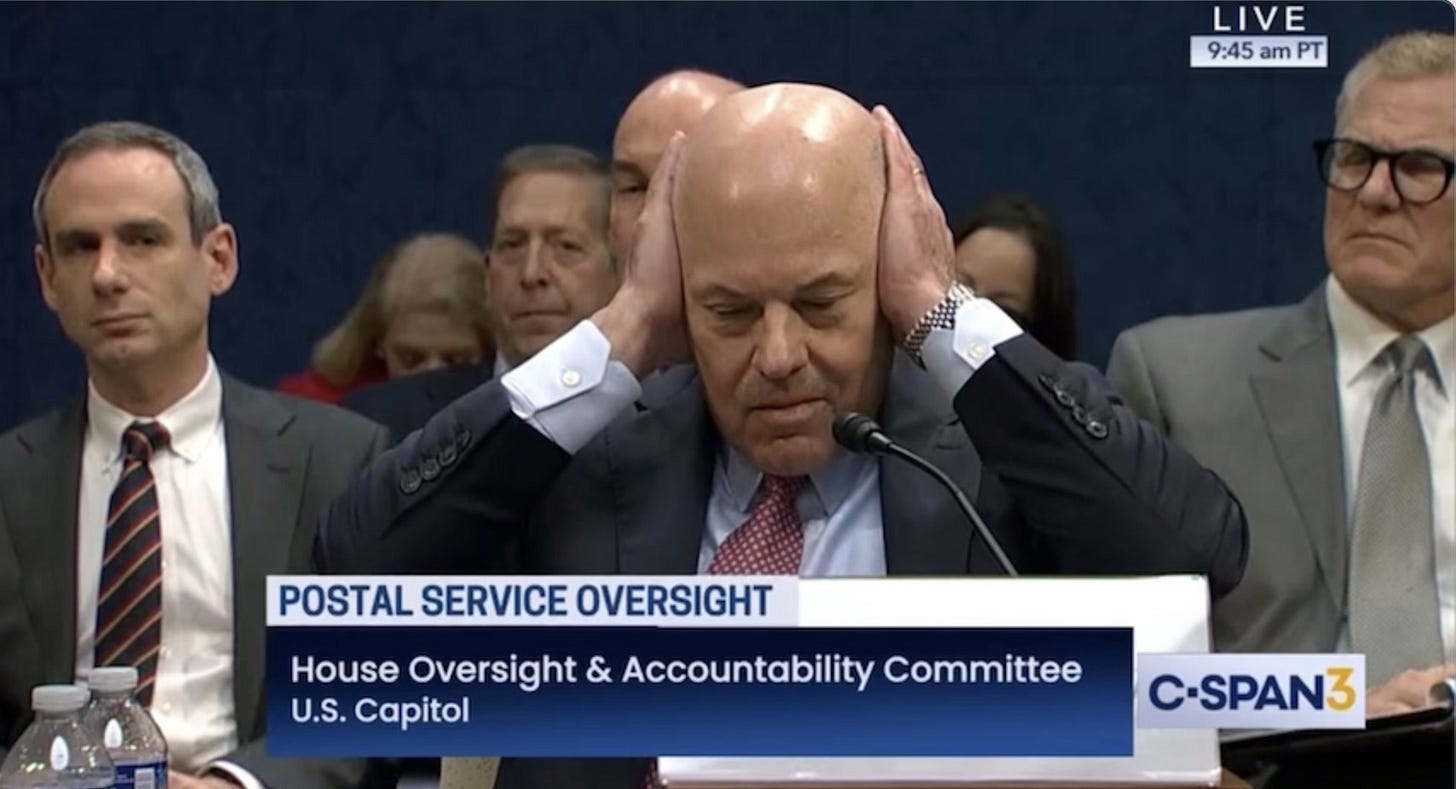Adieu, Louie!
The Postmaster General steps down.
Well, it finally happened. Postmaster General (PMG) Louis DeJoy stepped down yesterday, and Deputy PMG Doug Tulino will take the helm until the USPS Board of Governors can find a replacement. The Board is on the hunt, but it remains to be seen who the Trump administration wants or whether it still wants to fold the agency into the Commerce Department.
In any case, DeJoy’s successor has his or her work cut out for them. Here are some key issues I wrote about in a recent Issues & Insights op-ed:
When new USPS leadership emerges, their first big decision will be whether to continue DeJoy’s Delivering for America (DFA) plan. Under this multi-year reform strategy, the agency has started to consolidate mail processing, slow down mail service, repeatedly raise prices, phase out (some) air transportation, and double down on its career workforce.
This has been a mixed bag — to put things generously. The Postal Regulatory Commission recently analyzed the DFA in-depth, and found that the USPS “relies on overly optimistic and unsubstantiated financial projections for cost savings that are not likely to improve the financial health of the Postal Service.” Moreover, the DFA “depends on defective modeling and does not appear to be ready for implementation.” Price hikes are likely turning away more consumers than anticipated, leading to middling revenue. This revenue is stretched thin against a tsunami of compensation and benefit costs. The agency insists on prioritizing a career workforce even though career workers cost the agency about $8 more per hour than their non-career counterparts.
Even if new postal leadership wants to keep consolidating facilities and moving away from costly air deliveries, it will need to halt price hikes and career hires. DeJoy’s successor should restore trust with consumers by committing to limit postage increases to the rate of inflation. Additionally, the new leader should announce a dynamic hiring strategy focused on inexpensive non-career hires that could work seasonally or part-time depending on the USPS’ shifting needs.
Here’s hoping for significant reforms that can turn the ailing agency around.
![Go[ing] Postal](https://substackcdn.com/image/fetch/$s_!lRzt!,w_80,h_80,c_fill,f_auto,q_auto:good,fl_progressive:steep,g_auto/https%3A%2F%2Fsubstack-post-media.s3.amazonaws.com%2Fpublic%2Fimages%2F9e03b0b6-2100-4e6e-b2d7-7c6c009ef6c4_1280x1280.png)

